Shengavit › Kadesh » Ancient origins
Articles and Definitions › Contents
- Shengavit › Antique Origins
- Kadesh › Antique Origins
Ancient civilizations › Historical and archaeological sites
Shengavit › Antique Origins
Definition and Origins
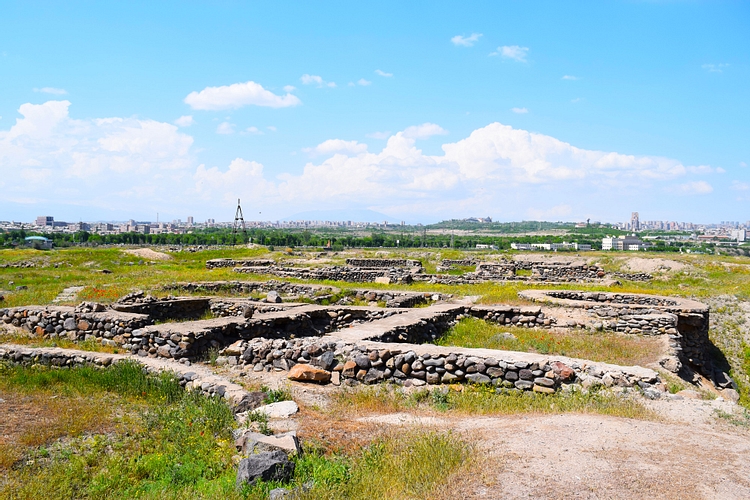
The Shengavit archaeological site is an ancient settlement occupied from c. 3500 - c. 2200 BCE and is located in a southern suburb of what is presently Yerevan, Armenia. The site is nearly 3 hectares (7 acres) in size - it was originally between 10-12 hectares (25-30 acres) - and lies 30 m (98 ft) above the banks of the Hrazdan River. Considered by many archaeologists to be Armenia's most prominent prehistoric and Early Bronze Age site, the artifacts found at Shengavit attest to the development of an early agricultural settlement of migrating tribes, whose technology and culture later spread outwards from the Armenian highlands into the Caucasus, Mesopotamia, and even the Levant.
AN UNUSUAL ARCHAEOLOGICAL SITE
Although Shengavit is situated at a fortuitous location for defense and the exploitation of natural resources from the Hrazdan River - including lucrative salt deposits - this prehistoric settlement differed significantly from those of the ancient Hittites, Babylonians, and Egyptians from the fifth to the third millennia BCE. Originally founded in Neolithic times, Shengavit was encompassed by cyclopean-like walls of stones taken from the nearby Hrazdan River and thus has an unusual stratigraphic layout.
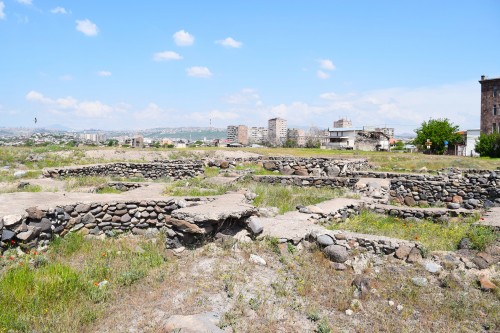
Shengavit Archaeological Site
Archaeologists believe that the peoples who inhabited Shengavit lived together in interconnected, rectangular and circular structures made from mud clay and large split stones, which were brought from the Hrazdan River. Located next to these stones are circular hearths made from burnt brick, which served as pillar support to the rectangular structures and other round dwellings. Archaeologists have also uncovered two-story storage pits for grains and cereals in addition to cylindrical, stone-laid entrances, defensive stone walls connected to fortified towers with square layouts, and a mysterious tunnel that runs directly to the Hrazdan River. This peculiar layout is not common in other prehistoric and Bronze Age settlements in the Near East.Some archaeologists even posit that Shengavit was further divided into separate districts where groups of people lived according to their occupation or social standing - copper traders, stone workers or farmers lived on one side of the settlement, while merchants lived in other sections.
IT IS BELIEVED THAT SHENGAVIT HAD A TOTAL POPULATION OF BETWEEN 2,000-6,000 PEOPLE AT ITS HEIGHT.
SHENGAVIT'S PEOPLE & MATERIAL CULTURE
Shengavit and its culture are increasingly viewed as a society in transition from tribal lifestyle to a sedentary community.(These people and their culture are referred to by academics as “Shengavitian” or “Kura-Araxes.”) Therefore, the advancement of society and cultural development at Shengavit appear to be similar and contemporaneous with other neighboring regions like Mesopotamia and Anatolia, despite Shengavit's unique structural layout. Material evidence demonstrates that Shengavit's inhabitants traded extensively with peoples located in present-day Iraq, Russia, Iran, and Turkey, and it is believed that Shengavit had a total population of between 2,000-6,000 people at its height.

Stone Tools at Shengavit Settlement
Among the most interesting finds at the site are “ornaments” carrying floral, geometric, or animal motifs. Statuettes, spindle heads, daggers, axes, ritual vessels, arrowheads, and tools in varying sizes and shapes have also been uncovered. Most artifacts were created from clay or animal bone. Fine adornments and beads made from precious and semiprecious metals like gold, silver, and bronze, stones such as jasper, as well as glass, all imply the development of early social stratification amongst those who resided at Shengavit; moreover, the remains of molds used in the casting of weapons and the wide variance of bronze alloys found in recovered artifacts insinuate an elevated level of metallurgy at Shengavit as well. Exquisite black-varnished, gray, and orange-red earthware and sepulchres have been unearthed beyond Shengavit's enclosure and within a number of dwellings.
The oldest artifacts discovered at Shengavit date to the Neolithic-Chalcolithic period or the “Copper Age.” There are four archaeological or “cultural layers” measuring 4 m (13 f) deep at Shengavit, which are of immense interest to archaeologists: the first and deepest layer dates from the late Neolithic era (c. 3500-c. 3000 BCE); the second layer dates from the early Eneolithic era (c. 3000-c. 2700 BCE); the third layer dates from the middle Eneolithic era (c. 2700-c. 2300 BCE); and finally, the fourth and shallowest layer dates from the late Eneolithic era (c. 2300-c. 2000 BCE.)
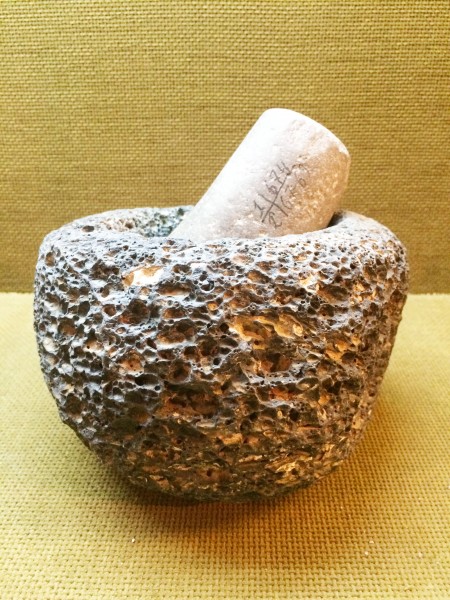
Prehistoric Mortas from Shengavit
RECENT EXCAVATIONS & HUMAN IMPACT
Yevgeni Bayburdian and Hovsep Orbelli were the first researchers to work at Shengavit from 1936-1938 CE for the Soviet Committee for the Preservation of Historical Monuments, but their excavations ceased at the end of the Great Purge and World War II. (Bayburdian was subsequently arrested, tried, and executed under orders from Joseph Stalin.) Investigations and excavation work led by Sandro Sardarian lasted from 1958 until 1980 CE but stopped just after the beginning of the Soviet-Afghan War (1980-1989 CE). A small museum opened on the site's environs in 1968 CE to mark the 2750th anniversary of the founding of Yerevan (or ancient Erebuni ); that same year, the excavated constructions were partially restored and opened to the public.
Human degradation has taken a heavy toll on Shengavit. After Stalin's death in 1953 CE, the Soviet Union sold a portion of land occupied by Shengavit in order to build a hospital. After Armenia gained its independence in 1991 CE, an additional 40% of the Shengavit preserve was sold illegally and privatized. In recent years, excavation work has once more resumed and was undertaken by Dr. Hakob Simonian in 2000 CE, which continued in 2009, 2010, and 2012 CE with the assistance of Dr. Mitchell Rothman, an archaeologist and professor at Widener University in the United States.
This article was made possible with generous support from the National Association for Armenian Studies and Researchand the Knights of Vartan Fund for Armenian Studies.
Kadesh › Antique Origins
Definition and Origins
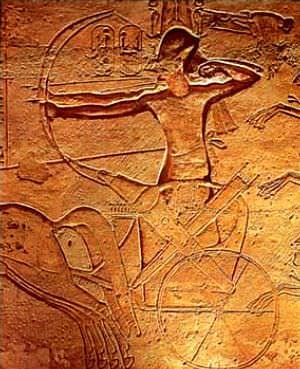
Kadesh was a city in the region of Syria and an important center of trade in the ancient world. It is probably best known as the site of the famous battle between Pharaoh Rameses II (The Great, 1279-1213 BCE) of Egypt and King Muwatalli II (1295-1272 BCE) of the Hittite Empire in 1274 BCE.
The Battle of Kadesh is the most thoroughly documented military engagement of ancient times in the Middle East with both antagonists claiming a decisive victory. For centuries the account given by Rameses II in his Poem of Pentaur and Bulletin (the two Egyptian sources we have for the battle) of a great Egyptian victory at Kadesh was taken as literal truth. Today, however, most historians regard these sources as more propaganda than an honest account of the events and the Battle of Kadesh is believed to have ended in a draw.
BACKGROUND OF THE BATTLE
The Hittites had long been making incursions into Egypt and had caused considerable trouble for the Pharaoh Thutmose III(1458-1425 BCE). Kadesh had been taken and held by the Egyptians under Seti I but the Hittites had reclaimed and fortified it.Ramesses II resolved to take lasting measures against the Hittites and drive them from his borders. A central advantage to be achieved in this campaign was the capture of Kadesh which, as noted, was a great center of commerce at the time.Reclaiming Kadesh would not only give Egypt free access to a hub of trade but would also enlarge the borders of Egypt's empire which had been greatly expanded under Thutmose III.
Ramesses II (or, according to some scholars, his father Seti I) had commissioned a great city to be built in the Eastern Delta which Ramesses II named Per-Ramesses ("House of Ramesses" but also given as "City of Ramesses") which was part pleasure palace and part military industrial complex. The city had a number of factories manufacturing weapons, training grounds for men, horses, and chariots, and other industries producing necessary supplies for military expeditions.
In 1275 BCE, Ramesses II prepared his army to move and waited only for the interpretation of omens as auspicious to launch his forces. In 1274 BCE, the omens received, he drove his chariot through the gates of Per-Ramesses at the head of over 20,000 men divided into four divisions. He led the Amun division himself with the Re, Ptah, and Set divisions following.
THE BATTLE OF KADESH
THE HITTITES HAD LONG BEEN MAKING INCURSIONS INTO EGYPT AND HAD CAUSED CONSIDERABLE TROUBLE FOR THE PHARAOH TUTMOSES III.
In his haste to engage the enemy, Ramesses II drove his division so quickly that he soon outdistanced the rest of his army. He made a further mistake in believing the reports of two captured bedouins who told him that the Hittite king feared the might of the young pharaoh and had withdrawn from the area.
In reality, the Hittite army was close at hand and, once Ramesses II again began his march, he was ambushed. Two captured Hittite spies then revealed the truth of Ramesses II's situation and the pharaoh understood he had no choice but to fight his way out of the trap he had allowed himself to walk into.
The confusion of the battle is attested to in Ramesses II's accounts, the Poem of Pentaur and the Bulletin in which he relates how the Amun division was overrun by the Hittites and the lines were broken, the division separated. The Hittite cavalry was cutting down the Egyptian infantry and survivors were scrambling for the supposed safety of the Egyptian camp.
Recognizing his situation, Ramesses II called upon his protector god, Amun, and reorganized his forces. Egyptologist Margaret Bunson describes how Ramesses II "brought calm and purpose to his small units and began to slice his way through the enemy in order to reach his southern forces" (131). He held the remains of his meager troops together through the force of his own character and the power of his position as pharaoh and commander-in-chief. Bunson continues:
With only his household troops, with a few officers and followers, and with the rabble of the defeated units standing by, he mounted his chariot and discovered the extent of the forces against him. He then charged the eastern wing of the assembled foe with such ferocity that they gave way, allowing the Egyptians to escape the net which Muwatalli had cast for them. (131)
Ramesses II had turned the tide of battle just as the Ptah division arrived on the field.
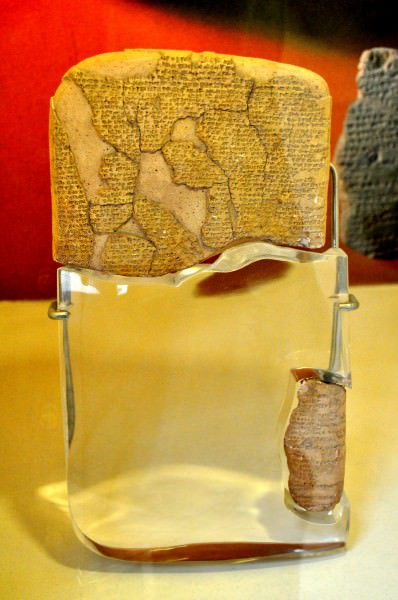
Kadesh Treaty
The Ptah division, with Ramesses II leading them, then drove the Hittite forces toward the Orontes River where many of them drowned. At this point in the battle, the Egyptian forces were caught between the Hittites at the river and the reserve forces Muwatalli II still had at his disposal in the fortified city of Kadesh. Why the Hittite king did not make use of his advantage is unknown but, for whatever reason, Muwatalli II refused to deploy his forces and "watched the cream of his command fall before Ramesses, including his own brother" (Bunson, 131). Ramesses II pressed his advantage and led his forces in a furious charge.
With the Hittites drowning in the river and being slaughtered on the banks, Ramesses II turned his forces about and, making full use of his advantage in the light Egyptian chariot, drove the Hittites from the field. Ramesses II then claimed a great victory for Egypt in that he had defeated his enemy in battle. Muwatalli II, however, also claimed victory in that he had not lost Kadesh.
CONCLUSION
The significance of the battle, aside from being the victory Rameses II seemed most proud of, is that it eventually led to the first peace treaty in the history of the world signed between the Hittite and Egyptian Empires in 1258 BCE. Among the stipulations was that "persons of rank or importance would be returned to their own rulers if they tried to flee from one territory to the other in order to escape punishment for crimes" (Bunson, 87). This meant that countries would cooperate in returning fugitives of noble status instead of assisting them in organizing a coup against a sitting ruler, a common practice in many different civilizations of antiquity.
The Treaty of Kadesh was not only the world's first peace treaty but also the first time on record that such a stipulation was made in any kind of treaty. The much earlier treaty from Mesoptamia in 2550 BCE, often cited today as the world's first peace treaty, and known as The Treaty of Mesilim, is not actually a `peace treaty' but rather a Treaty of Delimination which marks borders or boundaries instead of agreeing on terms for peace between nations.
The Treaty of Kadesh is recognized as the world's first actual peace treaty and set the stage for relations between Egypt and the Hittites until the fall of the Hittie Empire in c. 1200 BCE. Instead of warring with each other, the Egyptians and Hitties opened trade relations and exchanged technological and agricultural expertise which improved the lives of the people of both nations.
LICENSE:
Article based on information obtained from these sources:with permission from the Website Ancient History Encyclopedia
Content is available under License Creative Commons: Attribution-NonCommercial-ShareAlike 3.0 Unported. CC-BY-NC-SA License